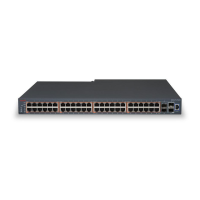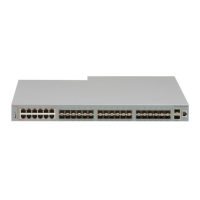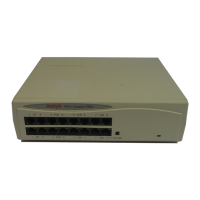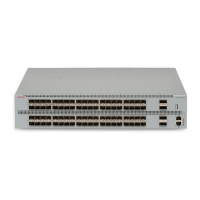1. Base Unit
2. Cascade Cable (connected from Base Unit Cascade Down connector to
Unit 2 Cascade Up connector)
3. Cascade Cable (connected from Unit 2 Cascade Down connector to Base
Unit Cascade Up Connector)
Initial installation unit number assignment
When you install the stack, the software automatically determines the physical order of all units in
the stack according to the position of the base unit within the stack. Thereafter, the individual units
maintain their original unit numbering, even if you change the position of one or more units in the
stack.
For example, when you initially power the stack, the base unit becomes unit 1 and the unit that the
base unit connects to (across the Cascade Down cable) becomes unit 2. The next unit is designated
as unit 3, this continues until the maximum stack configuration (up to eight units) is reached. If
another unit in the stack is designated as the base unit, the new base unit keeps its originally
designated unit number in the stack.
Stack MAC address
When a switch participates in a stack configuration, stack initialization automatically assigns a stack
MAC address. The stack MAC address is the base unit MAC address plus 1. If another unit in the
stack is assigned as the base unit, the new stack MAC address is the MAC address of the new base
unit plus 1. The original stack IP address still applies to the new base unit.
Temporary base unit
If an assigned base unit fails, the next unit in the stack order automatically becomes the new
temporary base unit. The LED display on the front panel of the temporary base unit changes to a
steady amber state to indicate the change. When this happens, use the Unit Select switch to
designate the temporary base unit as the base unit until you repair or replace the failed base unit.
You must designate a base unit because the automatic failover is only a temporary safeguard and, if
the original unit rejoins the stack, it does not resume base unit status. Also, if the stack configuration
loses power, the temporary base unit does not resume base unit status when power is restored.
Important:
If the temporary base unit is not assigned as the new base unit, and the temporary base unit
fails, the next unit in the stack order becomes the temporary base unit. This process continues
after successive failures until only two units are left in the stack.
Installing Ethernet Routing Switch 4900 Series
February 2016 Installing Avaya Ethernet Routing Switch 4900 Series 44
Comments on this document? infodev@avaya.com

